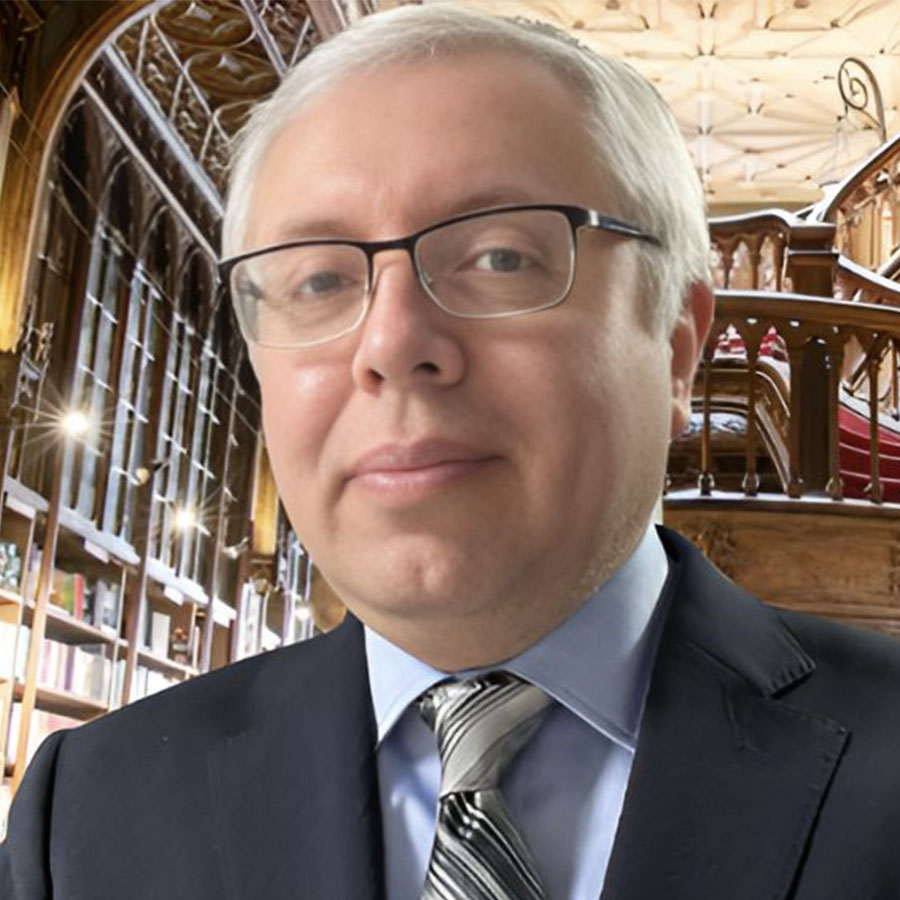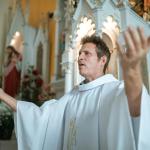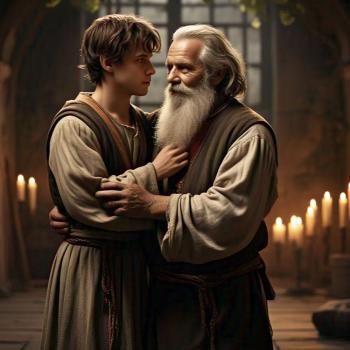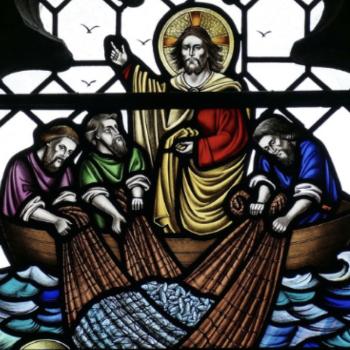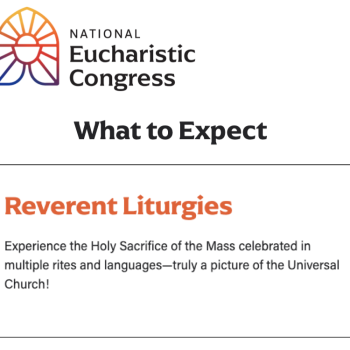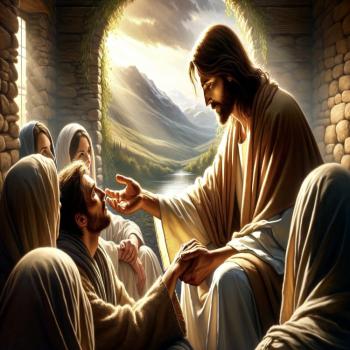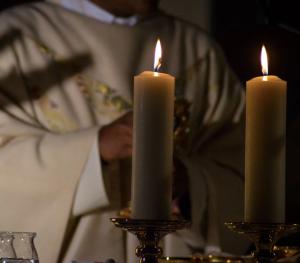
Sacred Liturgy, especially after the liturgical reform of Vatican II, helps us to perceive with more clarity the full dimension of Easter time: Christological, pneumatological, ecclesiological, eschatological and mystagogycal.
Lex orandi, lex credendi. The norm of our prayer is the norm of our faith. In other words, what we pray is what we believe. Therefore, Sacred Liturgy is always a school of faith and the liturgies of Easter time are no exception. By paying close attention to these liturgies we can appreciate the full dimension of what we are celebrating.
The Easter Time in the liturgical calendar
The source and summit of the Liturgical Year is the Easter Triduum. The Church solemnly celebrates the greatest mysteries of our redemption, keeping by means of special celebrations the memorial of her Lord, crucified, buried and risen. From the Triduum, all the other holy days and also the Easter time flow.
Easter time was originally called “Laetissimus spatium“, the happiest time. The Epistle of the Apostles, an apocryphal text, is the first known document that describes this period as a time in which we advance towards the Parousia. Other authors among the communities of early Christians describe it as a solemn period, a continuous festival in which the Eucharist was celebrated every day, the Alleluia was sung, the faithful did not kneel and no one did fast.
In our current liturgical calendar, we celebrate Easter time as a week of weeks, that is a group of seven weeks or 49 days plus the one of Pentecost, which is a synthesis of all these fifty days. The fifty days that go from the Sunday of the Resurrection to Pentecost Sunday are celebrated with joy and exultation as a single holiday, in fact as “the Great Sunday” (St. Athanasius, Epistula, 1366).
Another significant modification we find in the calendar after the liturgical reform of the Vatican II is that the entire period, from its beginning to its conclusion, is called Easter and the Sundays that follow it are called Easter Sundays and not, as before, Sundays after Easter, to make the point that each of these do pertain to the one and only celebration of Easter. Also the meaning of the days is specified in the Collect Prayer of the Vigil Mass of Pentecost: “God, who willed the Paschal Mystery to be encompassed as a sign in fifty days…””
The Easter time includes: the Octave of Easter, the Ascension that falls on the fortieth day and Pentecost.
The Octave of Easter
After the liturgical reform, the Octave has been preserved due to its historical link with the mystagogyc or initiation week for those who received baptism during the Easter Vigil in the Holy Night. These first eight days of Easter Time are celebrated as Solemnities of the Lord (Universal Norms on the Liturgical Year and the Calendar, n. 24)
The selection of the readings has been completely renewed compared to the Missal prior to the reform of Vatican II. During these fifty days we listen to the Acts of the Apostles, the Gospel and the letters of John, the First Letter of Peter and the Book of Revelation. The euchological texts (collects, prefaces, and other prayers) and the Lectionary highlight some characteristics of this time: Easter has a Christological dimension, a pneumatological dimension, an ecclesiological dimension, an eschatological dimension and a mystagogycal dimension.
The Christological dimension of Easter
Through Easter, the mystery of Christ crucified and risen is the central aspect, because “Christ, our Passover, has been sacrificed” (1 Cor 5:7). He takes now the place of the Lamb of the Old Testament: “He is the true Lamb who has taken away the sins of the world; by dying he has destroyed our death, and by rising, restored our life” (Preface I of Easter).
Christ is also the hight priest: “He never ceases to offer himself for us but defends us and ever pleads our case before you: he is the sacrificial Victim who dies no more, the Lamb, once slain, who lives forever” (Preface IV). “By the oblation of his Body, he brought the sacrifices of old to fulfillment in the reality of the Cross and, by commending himself to you for our salvation, showed himself the Priest, the Altar, and the Lamb of sacrifice” (Preface V).
The Pneumatological dimension of Easter
Another characteristic of Easter time, especially in the Liturgy of the Hours, is the pneumatological connotation, which highlights the action of the Spirit. In particular, the eucology of the Mass and the texts of the Divine Office, in the seventh week preceding Pentecost, make a clear reference to the Holy Spirit: “May the power of the Holy Spirit come upon us, Father” (Monday); “All-powerful and merciful Father, allow the Holy Spirit to dwell in us…” (Tuesday).
The ecclesiological dimension of Easter
In Easter time, the image of the Church emerges in relation to the Holy Spirit in several texts. As we draw near to Pentecost, the Spirit brings the Church together: “Grant to your Church, O merciful God, that, gathered by the Holy Spirit, she may be devoted to you with all her heart…” (Collect, Wednesday, seventh week).
In Pentecost, we see the Holy Spirit bringing together in unity the community of the saved: “Grant that from out of the scattered nations the confusion of many tongues may be gathered by heavenly grace into one great confession of your name” (Collect of the Vigil Mass of Pentecost). The Spirit introduces into the mystery of life in Christ: “as the Church came to birth, opened to all peoples the knowledge of God and brought together the many languages of the earth in profession of the one faith” (Preface of Pentecost).
The eschatological dimension of Easter
In some prayers, in addition, another peculiarity is highlighted: the Parousia, the second coming of Jesus Christ to judge the living and the dead. It is affirmed several times that the death and resurrection of Christ have opened the doors of paradise to us and participation in the Easter sacraments guides the community towards the eternal Easter: “Grant that, by celebrating these present festivities, we may merit through them to reach eternal joys” (Collect, Wednesday within the Octave of Easter); “through the restoration of its original dignity, human nature has received the hope of rising again” (Collect, Wednesday of the second week).
The mystagogical dimension of Easter
Easter time is a privileged moment for mystagogy. The final period of the initiation of adults in the Christian faith “extends through the whole Easter season and is devoted to the postbaptismal catechesis or mystagogy. It is a time for deepening the Christian experience, for spiritual growth, and for entering more fully into the life and unity of the community” (OCIA n. 7.4). “On all the Sundays of the Easter season after Easter Sunday, the socalled Masses for neophytes are to be scheduled. The entire community and the newly baptised with their godparents should be encouraged to participate” (n. 25).
To conclude
In Easter time we can glimpse a correspondence between the Passover of Christ and our own Easter. Throughout Lent, Jesus prepared himself to consummate his salvific mission, dying on a Cross and resurrecting on the third day. During Lent, we prepared ourselves for our Passover, dying to our life of sin and resurrecting to a new life through baptism (in the case of catechumens) or through the renewal of our baptismal promises at the Easter Vigil in the Holy Night. Through Easter, we seek a personal encounter with the risen Jesus as we strive to live a new life in full accordance to our heavenly Father’s will.
Easter time is not the culmination of a process, but one more stage in our Christian life that has the Parousia in the horizon. We live as children of God who have buried their life of sin and have risen to a new life through Baptism, in preparation for our final encounter with Jesus, when he comes again with all his glory.


